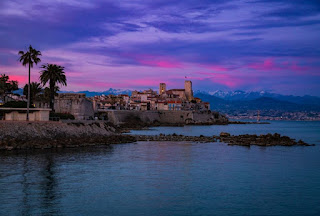“You can get the true essence of New Yorkers by just hanging out in Central Park.” – Andy Roddick
===================================================================(in the U.S. state of New York) With a population of more than 8.8 million people distributed over some 300 square miles (~778 sq. km)., New York City (NYC) is the most densely populated city in the United States. Found at the southern tip of the state, NYC is the center of the largest metropolitan area in the world (by urban area). The city has been described as the cultural, financial, and media capital of the world, influencing commerce, entertainment, research, technology, education, politics, tourism, dining, art, fashion, and sports. Home to the headquarters of the United Nations, New York is a center for international diplomacy. With this country's tallest buildings, biggest museums, and best pizza, it is a city of superlatives -- from the dazzling spectacle of Broadway to the Museum of Modern Art's (MoMA’s) world-class galleries, the boutiques of SoHo ("South of Houston Street"), and the array of restaurants offering cuisines from around the world, there is a different city to discover here, every time you visit. Beyond its iconic landmarks, however, New York’s secret side awaits. You’re likely to stumble upon indie vintage shops and locals-only brunch spots, even on the shortest of strolls. And when the crowds and noise are too much to take, just look up -- and the skyline alone will remind you why you wanted to come here!
+ Featured here is one of the world’s most renowned green spaces, Central Park, which comprises 843 acres (~139 ha) of rolling meadows, boulder-studded outcroppings, elm-lined walkways, manicured European-style gardens, a lake and a reservoir -- not to mention an outdoor theater, a memorial to John Lennon, an idyllic waterside eatery, and a famous Alice in Wonderland statue. Highlights include the 15-acre Sheep Meadow, where thousands of people lounge and play on warm days; Central Park Zoo; and the forest-like paths of the Ramble, popular with birdwatchers. In warm weather there are free outdoor concerts on the Great Lawn and top-notch drama at the annual Shakespeare-in-the-Park productions held each summer at the open-air Delacorte Theater. Other popular stops include the Shakespeare Garden, on the west side between 79th and 80th Sts, with its lush plantings and excellent skyline-view. Like the city’s subway system, the vast and majestic Central Park, a rectangle of open space in the middle of Manhattan, is a great class leveler -- exactly as it was envisioned. Created in the 1860s and ’70s by Frederick Law Olmsted and Calvert Vaux on the marshy northern fringe of the city, this popular park was designed as a leisure space for all New Yorkers regardless of color, class or creed. Central Park is actually only the fifth largest park in New York City, trailing behind other local greenspaces like Pelham Bay and Van Cortlandt parks in the Bronx, the Greenbelt on Staten Island, and Flushing Meadows Corona Park in Queens.















